11 Artworks From Artnet’s Gallery Network That Our Experts Are Loving This Week
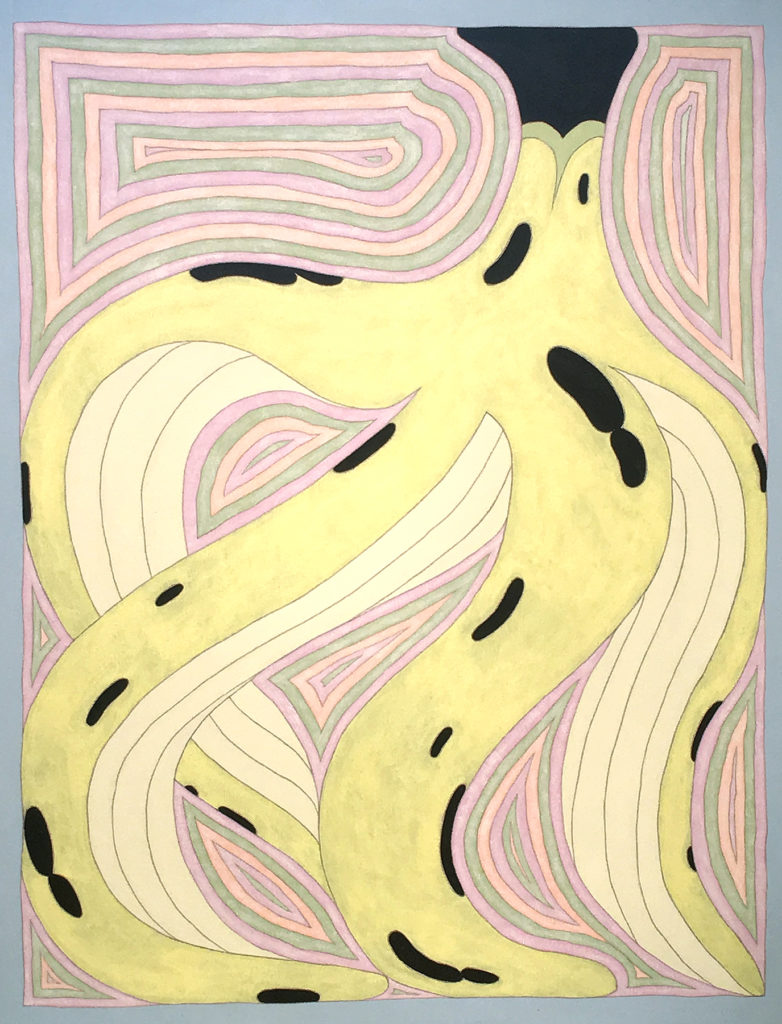

Artnet Gallery Network

Every week, we explore the thousands of galleries on the Artnet Gallery Network to highlight the spaces and artworks inspiring us right now. Take a look at our latest picks below.
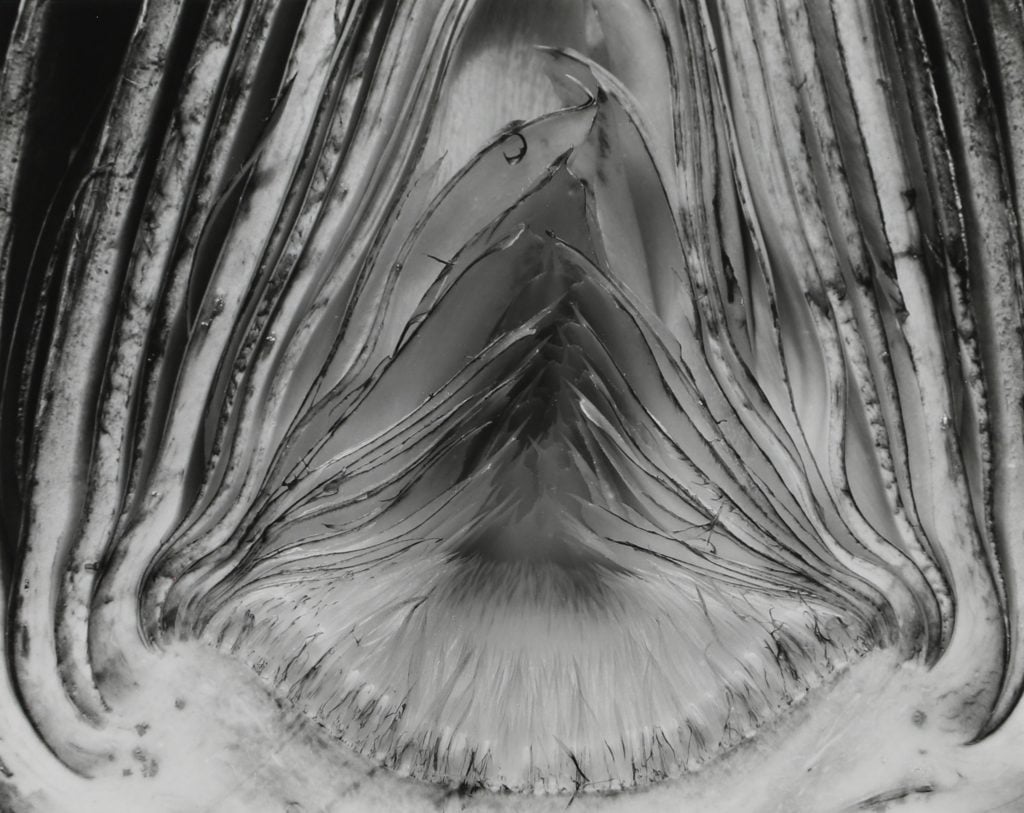
Edward Weston, Artichoke, Halved, 1930. Courtesy of Seagrave Gallery.
Edward Weston is one of the most influential photographers of the 20th century and his love for nature and form fundamentally changed the direction of photography. Here, he captures an artichoke close up, revealing detailed patterns of lines and unique forms that remind us of the detailed beauty in all natural forms.
— Julia Yook
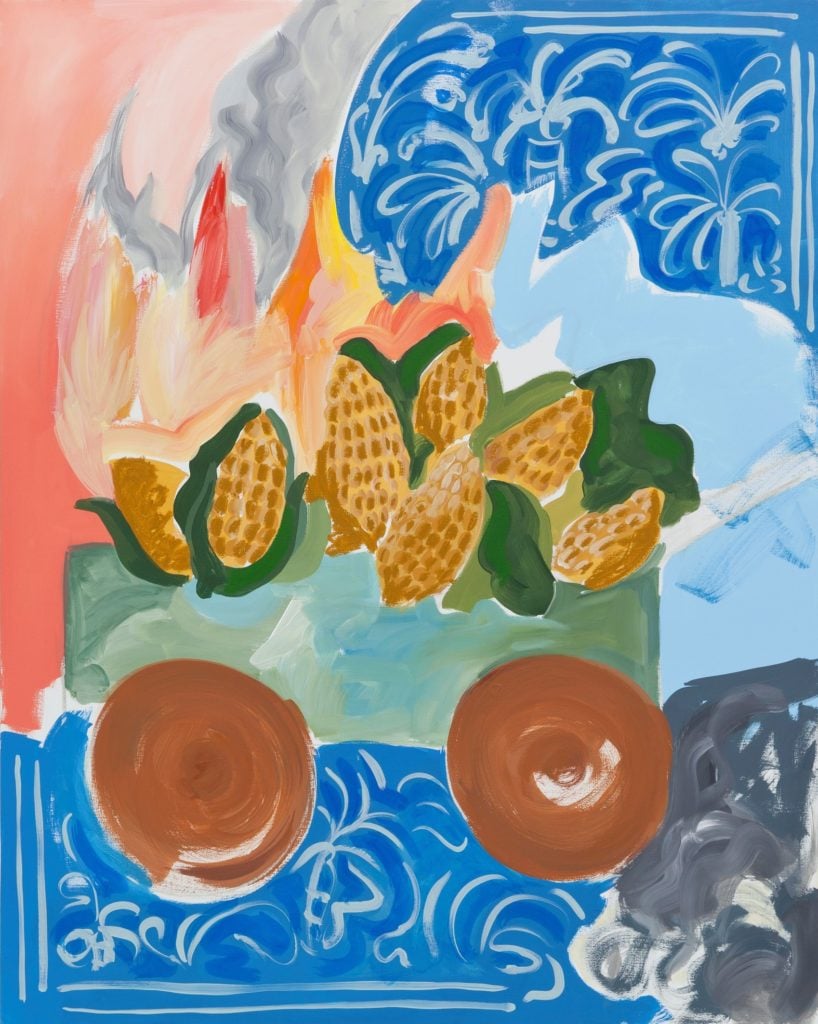
Sol Calero, Corre Que Se Quema (2019). Courtesy of Barbara Gross Galerie.
Berlin-based Venezuelan artist Sol Calero creates colorful, surrealist, and often nonsensical scenes that belie their satirical political bite. Here, seven ears of corn try to escape from a burning car. I don’t know what’s more startling, my complete lack of empathy for these anthropomorphic vegetables or that I need exactly seven ears of corn in my sancocho (Caribbean beef stew).
— Cristina Cruz
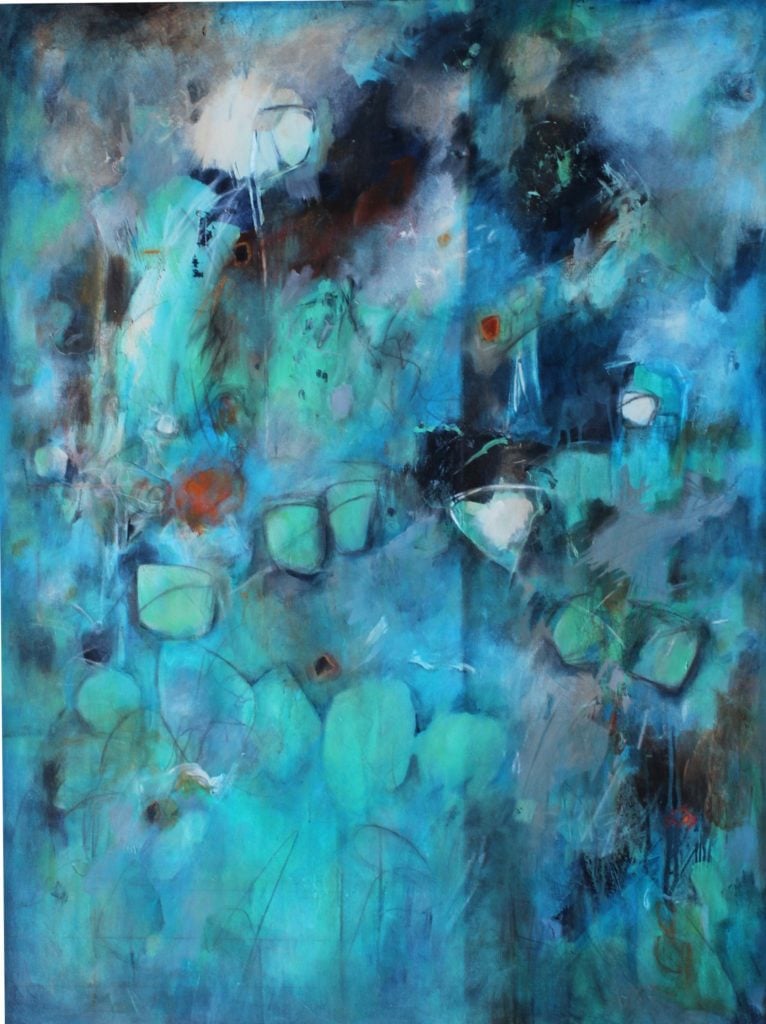
Diane Walker-Gladney, Raccoon Dance Party (2018). Courtesy of Spanierman Modern.
The dark blues of the canvas have a nocturnal feel that matches the works whimsical title, which, along with the energetic abstract shapes, makes me think of a clatter of sounds outside in the dark that can’t be identified.
— Karin Petit
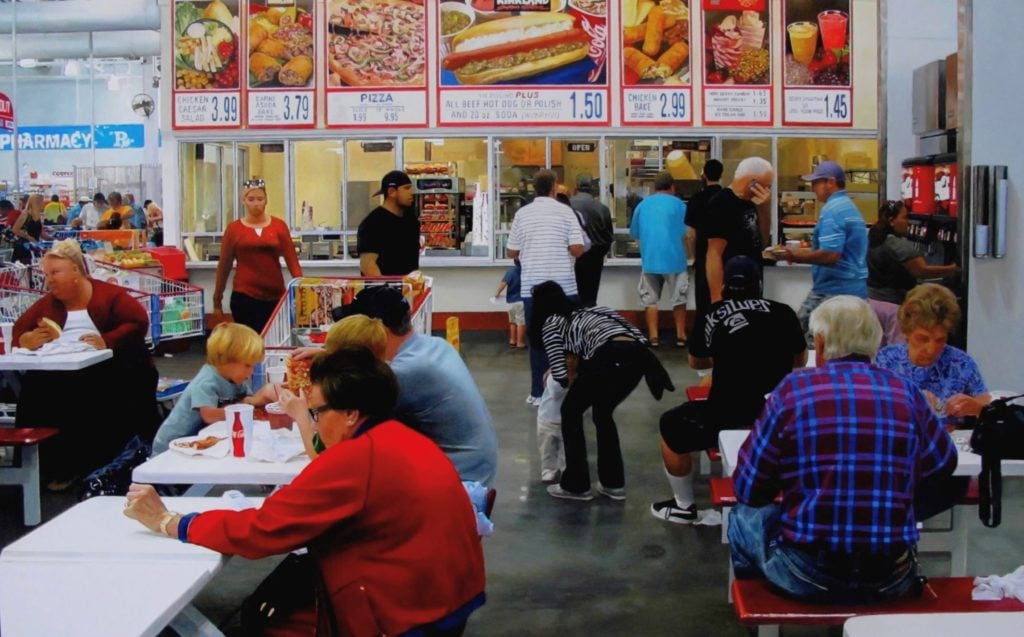
Romain E., Costco Brunch Orange County. Courtesy of Plus One Gallery.
French painter Romain E. turns his hyper-realistic gaze on the United States for this scene, where he depicts Costco shoppers seated on benches for a quick snack on a paper plate. It’s a fleeting scene captured deftly in the time-consuming mediums of oil and acrylic on canvas. This painting nudges me to search for beauty under fluorescent lights and is a reminder that pizza and hot dogs are just as worthy of a still life as the most exotic displays of fruit and flowers.
— Sara Carson
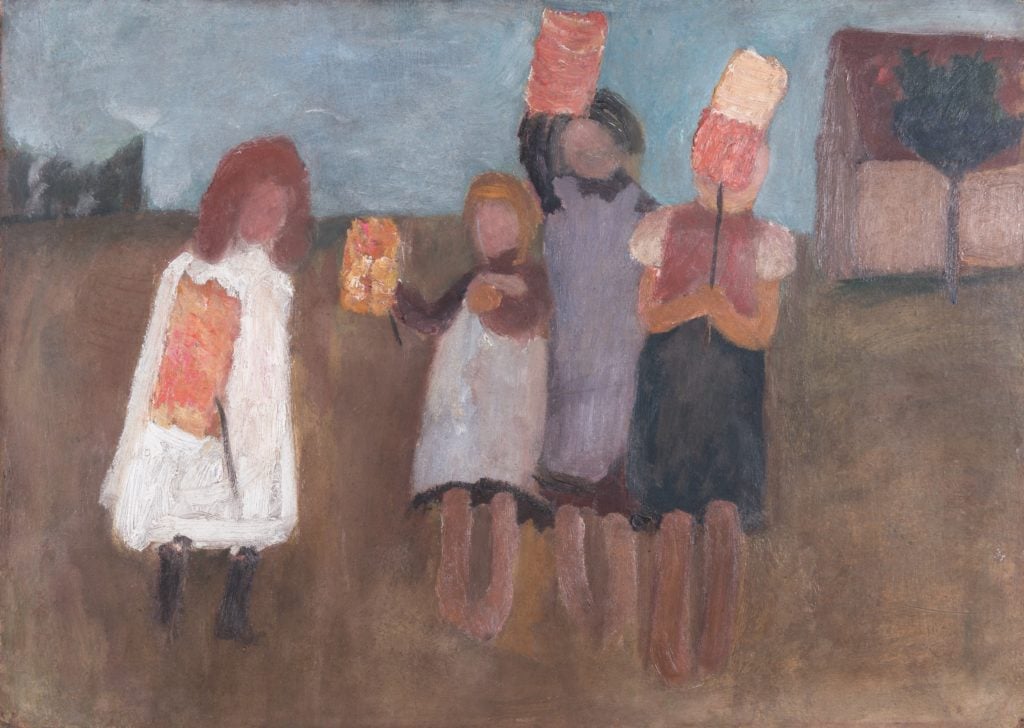
Paula Modersohn-Becker, Children with Lanterns in Front of a House (ca. 1901). Courtesy of Kunsthandel Wolfgang Werner.
Paula Modersohn-Becker died in 1907 at just 31 years old, but in her brief life she became a leading representative of early Expressionism. This enchanting, mysterious picture was recently included in an exhibition at Kunsthandel Wolfgang Werner in Berlin. It’s hard to discern just what is happening. Children hold up their lanterns, yet they hardly seem to touch the ground, floating like little ghosts above the earth spirited away by their lanterns.
— Alexandra Schott
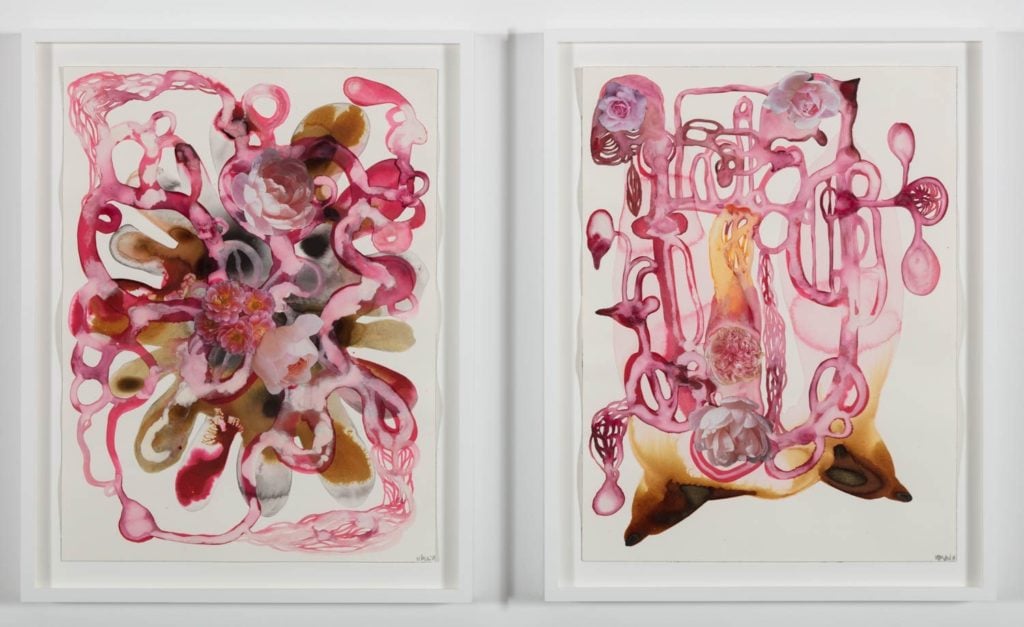
Wangechi Mutu, Floral Insideout VII & VIII (2018). Courtesy of Gladstone Gallery.
I have been a huge fan of Mutu’s work and process for years! This “floral” piece reflects her grotesque and futuristic style, which entwines the daintiness of pink flowers within a fleshy organ-like framework.
— Qadira Farrington
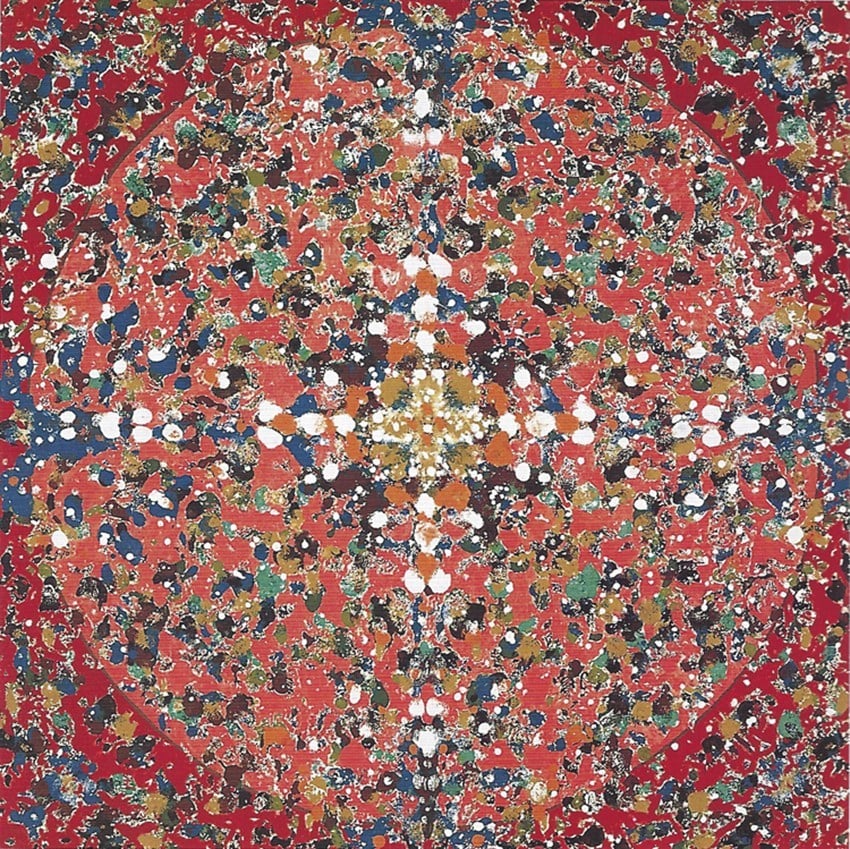
Peter Ford Young, Untitled (1974). Gallery Wendi Norris.
In his Mandala paintings, Peter Ford Young uses dots to create entrancing, psychedelic patterns. In this work, the artist develops symmetry in chaos by creating methodical folds in his canvas, resulting in a work that is both whimsical and balanced.
— Nan Stewart
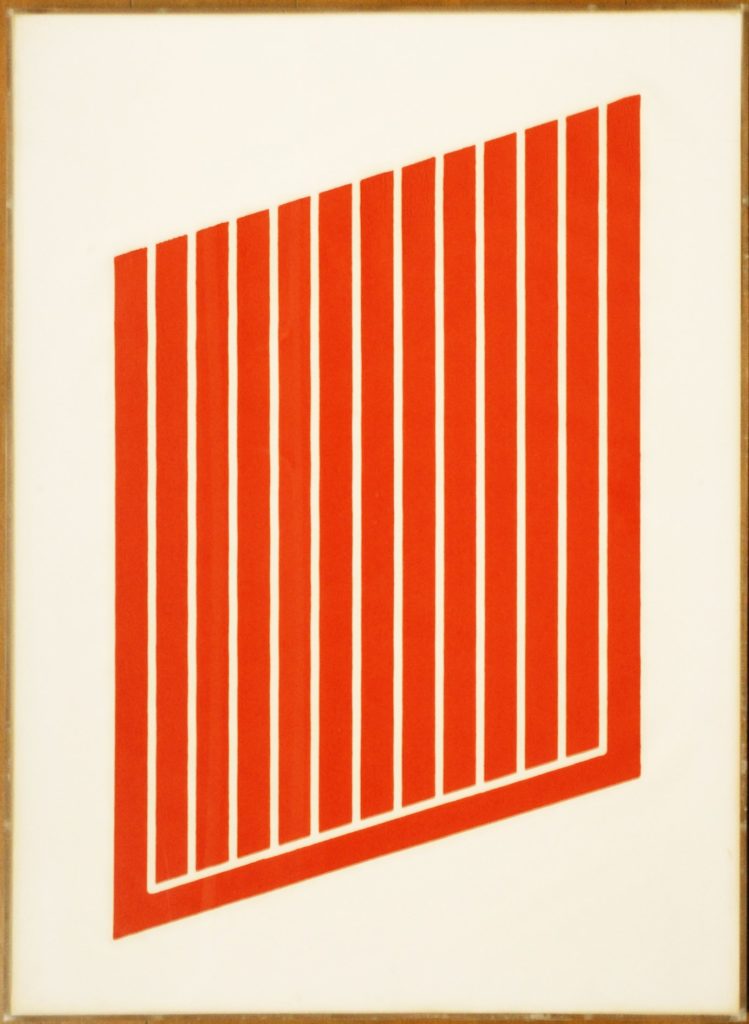
Donald Judd, Untitled (1961–69). Courtesy of Galerie Ziegler.
As one of the progenitors of the Minimalism movement, Donald Judd’s oeuvre also had an impact on furniture design and architecture. This limited-edition woodcut represents Judd’s iconic geometrical style, resembling a musical scale of a track which creates this uplifting unique momentum.
— Tobias Molitor
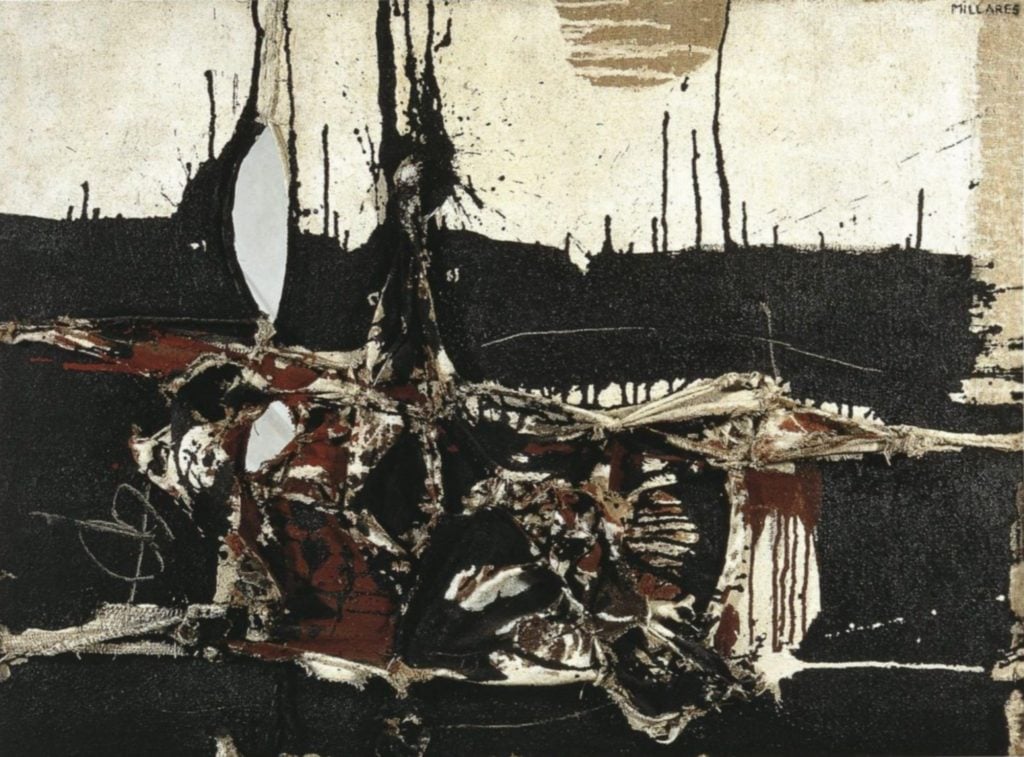
Manolo Millares, Cuardo 84 (1959). Courtesy of Zeit Contemporary Art.
Manolo Millares was a Spanish abstract artist whose focused paintings and assemblages in the middle decades of the last century. I love the three-dimensionality of this work, how the drips seem to seep upwards and the powerful juxtapositions of black, brown, and beige.
— Neha Jambhekar

Lygia Clark, Livro-Obra (1964–83). Courtesy of Barbara Mathes Gallery.
Lygia Clark was one of the leading artists of the Brazilian Neo-Concrete movement, which included poetry as well as fine arts. She skillfully plays with the boundaries of plastic art and literature and unites them in her work Livro-Obra. The geometric fragments that seem to break out of the paper make a work of art (obra) out of a book (livro) and achieves a new objectivity that seduces the viewers to indulge in the tactile stimuli.
—Miriam Minak
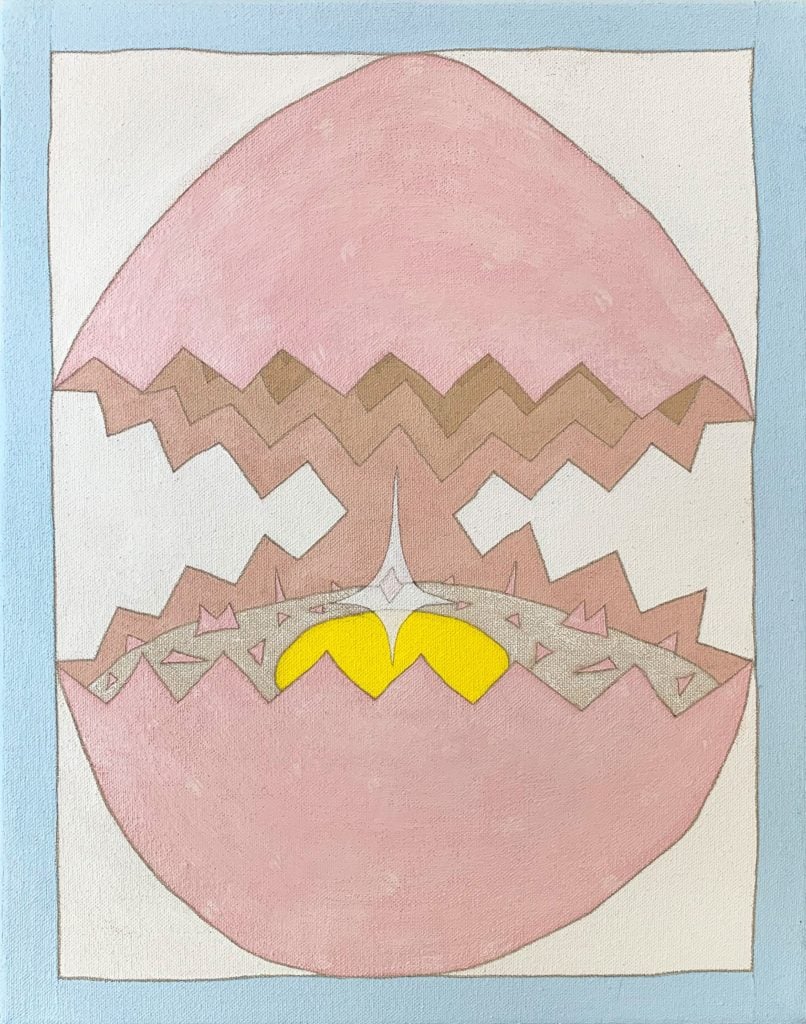
David Onri Anderson, The Promise (2019). Courtesy of David Lusk Gallery.
Anderson’s spiritual and surreal paintings often include ovoid shapes. There is sensuality to these images, and they conjure a crystallized occultist images that recall a favorite Japanese cartoon character, an egg called Gudetama. Anderson’s clever use of color and cross-sections throughout his work cements a psychedelic mythology all his own.
— Santiago Garcia Cano